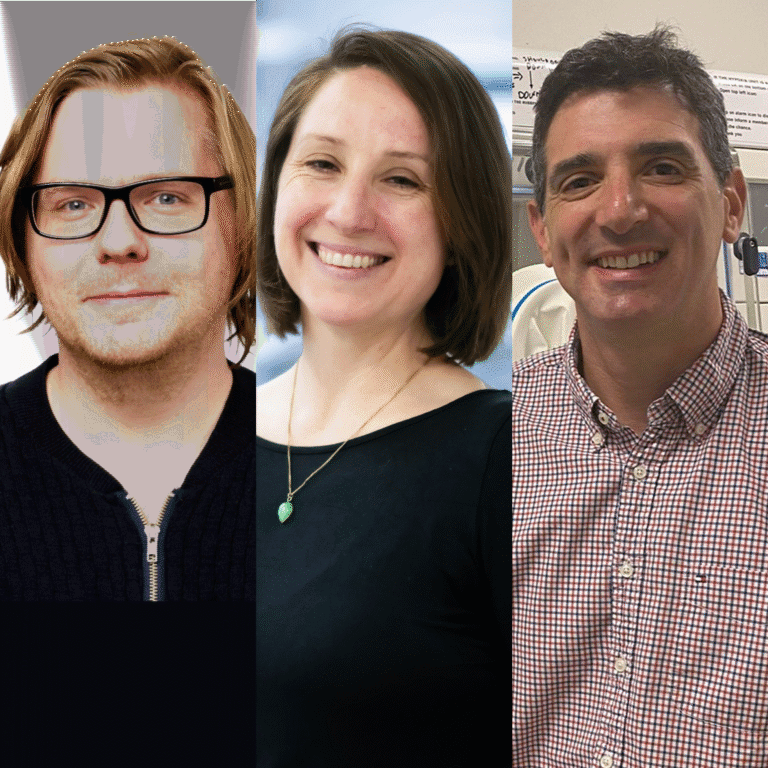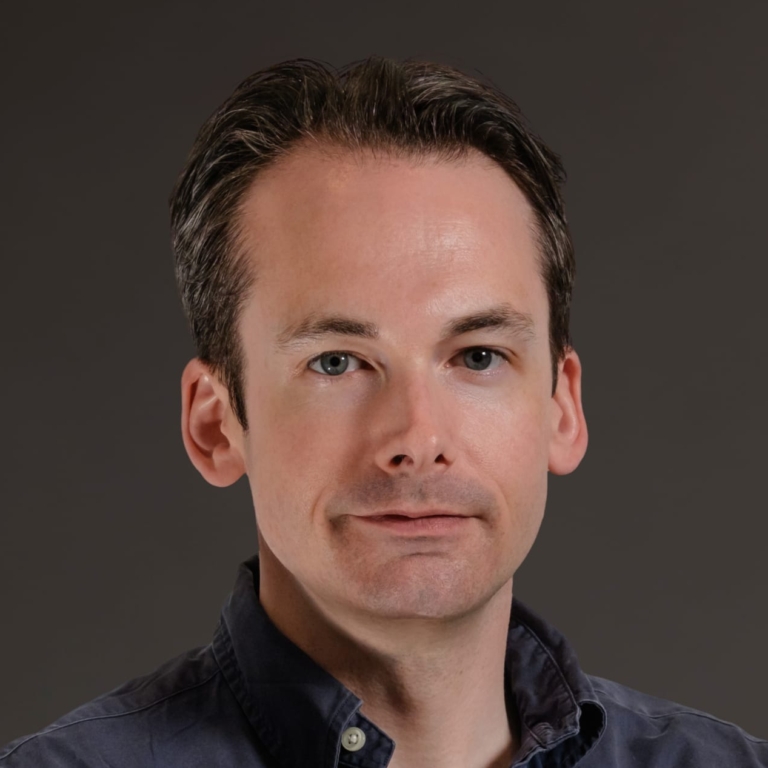
We travelled to the University of Glasgow earlier this month to formally present Andrew Davidson, one of our 2024 Lister Fellows, with the Lister Prize.
Lister Institute Chair Professor Sir John Iredale and Director Dr Sally Burtles joined Andrew and his colleagues to listen to a seminar on his work and enjoy some time with old and new friends at the university’s School of Cancer Sciences. We caught up with Andrew shortly after the visit to find out more about his experience so far as a Lister Fellow and delve deeper into his work on tumour cells.
Q: Did you enjoy the Prize Visit?
A: It’s rare – and very good – to have an experience like that, and it was a great way to mark what I hope will be a big milestone in my career. I had a really nice moment about halfway through giving the talk where it suddenly hit me that I was receiving the Lister Prize, and how proud and honoured I felt. I had been focusing on preparing the talk and more generally on setting up my lab – rushing around trying to do lots of things, and it was a bit of a surprise to suddenly feel those emotions. It was a bit of a whirlwind, but a very happy moment.

Professor Iain McInnes, who is Vice Principal and Head of MVLS (Medical Veterinary and Life Sciences, our College) came to the talk, as did Gerry Graham, the Dean of Research. I really appreciate them giving up their time to come out. We’re on a satellite campus so it wasn’t just a simple hop next door, but it really added to the event. It was also great to see Chris Halsey, who is the Head of the School of Cancer Sciences.
I had a really nice moment about halfway through giving the talk where it suddenly hit me that I was receiving the Lister Prize, and how proud and honoured I felt.
Q: Can you tell us more about the role cell death plays in cancer?
A: Even as a non-biologist, you might think that cell death is a good thing to find in a tumour. That’s what cancer treatments are designed to do after all – kill cancer cells and remove them from our bodies. But there are some findings showing that cell death can actually help tumours grow. When you look at some really aggressive cancers, they often have a lot of cell death in them. It’s a paradox.
Q: Overall, is cell death a good thing or a bad thing for cancer patients?
A: For me, both things are true. When cancers arise in our bodies cell death can be a very good thing in getting rid of them, and the vast majority of cancer cells are eliminated in this way. But once a tumour reaches a certain size, it can sustain a certain amount of cell death, and in fact it can’t avoid it.
In development and wound healing, which is my background area, we know that our bodies are designed to respond to unexpected cell death by healing. A tumour is a part of the body, and those healing systems are tricked into repairing it when it’s damaged. When we attack the tumour with therapies, the body thinks it has been hurt and needs to heal. This hijacking of the healing process is stimulated by cell death.

Q: How are you studying cell death?
A: I’m trying to dissect this process through live imaging. It’s difficult to do live imaging on a living body because most of the samples we’re interested in aren’t transparent. They also move around a lot. I use Drosophila because at certain life stages it’s see-through and easy to immobilise under a microscope. It’s also compatible with some of the most powerful genetics tools in the world, and it has a simple genome that makes it easier to study than some more complex organisms.
Q: What excites you most about your work?
A: I’m definitely very image-orientated, so I would say being able to make beautiful movies and see things happening right before our eyes under the microscope. The immediacy of watching cells and the amount of biology you can see happening is what I enjoy the most. With other techniques you’re visualising biology indirectly, but with microscopy you’re watching it live. Of course trying to turn that into numbers comes with its challenges, but a picture is worth a thousand words, as they say.
Q: What are your plans for the Lister Prize funding?
A: As soon as I was awarded the Prize, we posted an advert for what will be my first postdoc. I’ve had a student for the last year and we’ve invested time setting up a tumour model and applying the ideas and tools I built during my own postdoc. We’re now in a position where we have our model and we’re ready to start using it in earnest. The Lister funding gives us a launch pad and a head start.
It’s also given me the opportunity to do some bolder research, rather than trying to conserve money and do things that are low risk but less exciting. It’s given me confidence to go out and start tackling some of the really interesting things I want to do. It’s been a big boost in many ways.
The Lister funding has … given me the opportunity to do some bolder research, rather than trying to conserve money and do things that are low risk but less exciting. It’s given me confidence to go out and start tackling some of the really interesting things I want to do.
Q: Finally, what advice would you give someone who was considering applying for the Lister Prize?
A: Looking back at my application there were a few things I think helped. One was having an element of risk or boldness in my ideas and going outside my comfort zone. Another was having a novel technology, or a novel approach. I was coming from a different field, wound healing, and proposing something in cancer. So my advice would be to push yourself and try something new, be it new technology or new ideas.



